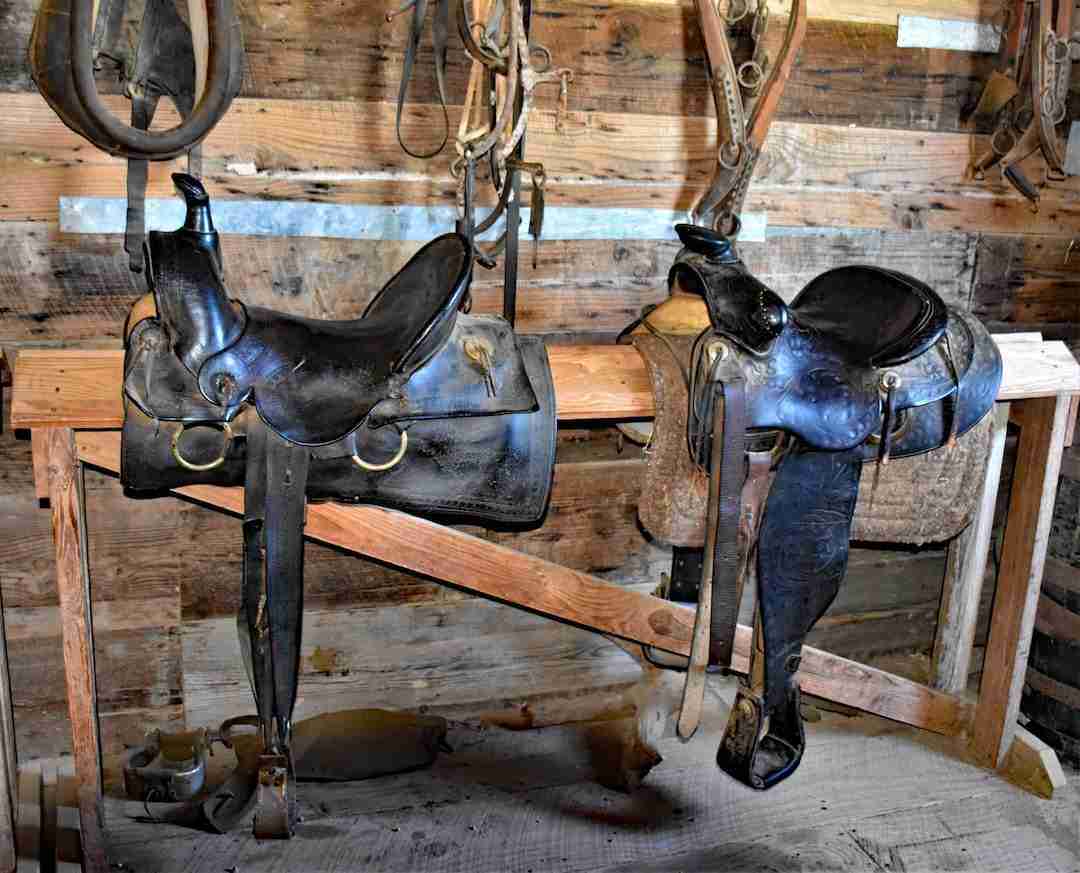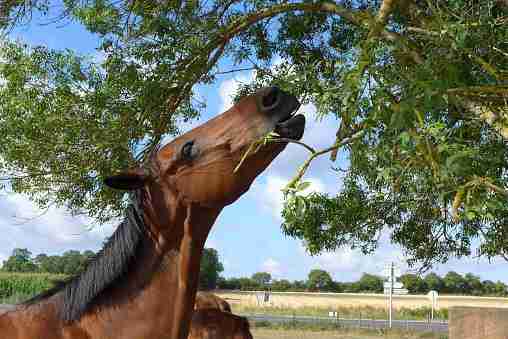Two of the biggest breeds of horses in the world, the Shire horse vs Clydesdale horse, may share some subtle similarities but at the same time have many differences, and to the untrained eye, can seem like the same breed. So what sets these two majestic breeds apart, the Shire Horse versus the Clydesdale horse?
Shire Horse vs Clydesdale Horse, these breeds share a lot in common but have subtle differences in their physical characteristics, behaviour, and temperament. Shire horses originated in England, while the Clydesdale was named after Clydesdale, the old name for Lanarkshire known for the river Clyde.
Although both these breeds are a sight to behold with their size and power towering over their owners, these horses are the epitome of what gentle giants really are. However, with similarities making it hard to tell the one from the other, some apparent differences can help you tell them apart.
Shire Horse vs Clydesdale Horse: A Comparison
Although both horses are big, powerful, and absolutely mesmerizing to watch, they have their different traits, characteristics, and history that set these two gentle giants apart.
Shire Horse vs Clydesdale Horse: History
Both have an exciting history, and their intertwined history lies in the time that the Clydesdale was introduced to the Shire breed to save their dwindling numbers, keeping the Shire from extinction, perhaps the reason why they look so similar today.

The Shire Horse
The Shire’s history can be traced back to England in 1068 when “War Horses” or “Great Horses” were used to carry knights in full armor into battle, and it makes sense that this would be a shire horse if you think about the weight of the knight fully suited would stack up to almost 200kg.
The name Shire only started being used in the mid-17th century, with incomplete records beginning to appear by the 18th century. However, the records of a well-known English horse known as the Packington Blind Horse during this era are said to have been the founding stallion of the Shire breed.
In the 19th century, the need for powerful cart horses was in high demand to transport goods from docks to cities and the countryside. In addition, rough roads and terrains needed muscled horses with the ability to pull heavy loads through mud and challenging road conditions.
In 1853 the United States saw its first import of Shire horses, and by 1880, thanks to their popularity, large numbers were imported, giving rise to the American Shire Horse Association in 1885.
With the increasing mechanization during WWII and less need for heavy draught horses or the ability to feed them, the Shire breed fell to its lowest point. So, between 1950 and 1960, the Clydesdale was introduced in breeding programs with the Shire horse to increase the dwindling number and save them from extinction.
In the late 20th century, the breed saw a revival of interest, and the Shire breed, which only had 25 registered horses in the 1950s, rose to 121 registered horses by 1985.
Today, according to the American Livestock Breed Conservancy, Shire horses are considered a critical breed; they estimate that there are fewer than 1500 Shire Horses worldwide.
The Clydesdale Horse
Like many old horse breeds, tracing the exact lineage of the Clydesdale back to the start of the breed is a bit murky.
Clydesdale in Scotland, with its mighty river Clyde, was the birthplace of the Clydesdale horse, hence the reason why they inherited the name, today better known as Lanarkshire.
In the mid-18th century, two imported Flemish stallions were bred with local Scottish mares that produced larger foals than the local stock, one a black stallion imported by John Paterson and a dark brown stallion owned by the Duke of Hamilton. These two stallions are said to have been the start of the Clydesdale horse.
Records of pedigrees only started to be recorded in the early 19th century, and in 1806, a young filly known as Lampits Mare was traced back to John Paterson’s black stallion. Almost every Clydesdales ancestry lists this mare in their lineage. The first reference to the term Clydesdale was recorded in 1826.
By 1840 the Scottish Draught horse and the Clydesdale were considered one and the same breed through extensive crossbreeding of Clydesdales stallion to local mares.
In 1877 and 1879, the Clydesdale Horse Society of Scotland and the American Clydesdales association were created, respectively.
The First World War saw thousands of Clydesdales conscripted into the army, but after the war, the horse also saw a decline in numbers as mechanized equipment took over the need for draught horses.
By 1975 the Clydesdale found itself on the Rare Breed Survival Trust list and was considered vulnerable. Today they are at risk of becoming extinct, with fewer than 5000 Clydesdales left worldwide.
Shire Horse vs. Clydesdale Horse: Physical Characteristics
Physical characteristics may not be as evident as telling the difference between an Arab horse and a Thoroughbred. However, there are some differences in the physical attributes of a Shire horse versus the Clydesdale horse.
The Shire Horse
Shire horses are big strong horses that stand at a minimum height of 168cm to over 178cm (16.2-17.3+hh) and weigh between 850-1100kg.
They have long, lean faces with large, alert eyes and a long neck in proportion to the body that is slightly arched. They have deep, broad, sloping shoulders with a wide chest area. Their backs are short and muscular with long and sweeping hindquarters, with long cannon bones in the hind legs.
Tails should be set well up on the rump with silky, straight, and fine feathering on the lower legs.
Shires usually come in black or bay colors but can also be found in grey and chestnut, although chestnut is a rare color to find. Chestnut stallions in the UK are not accepted; however, the US association recognizes the chestnut color.
Excessive white marking and roaning are not desirable. Shires can have white markings, such as on the face and legs, but excessive white markings are discouraged and are preferred to be kept to a minimum.
The Shire’s gait is smooth and long with no jarring to the rider, with forceful movement and good use of the knees and hocks.

The Clydesdale Horse
The Clydesdale horse is equally impressive in size and stature, coming in as the second largest breed in the world. They can range between 162 to 163cm (16-18hh) in height but weigh slightly less than the Shires at 820-910kg.
They have straight faces, sometimes with a slightly convex facial profile, called a roman nose, with a broad forehead and wide muzzle.
Their eyes are bright, clear, and more oval than round, with an alert twinkle of intelligence. They have a well-arched neck that joins strong, sloping shoulders and high withers.
A strong muscular back joins muscular hindquarters with wide hips and a long croup with a sloping arch from the hips to the tail. Good feathering on the cannon bone should be silky, smooth, straight, and springing from the tendon.
Usually found in bays with distinctive white facial markings and white legs, these giants can also come in black, grey, or chestnut, with the addition of white spotting coloring on the horse’s body called sabino.
If you see a Clydesdale, you will see its active gait with clear and distinctive high leg action from the front and hind legs.
Other Articles You May Also Like
- Steps To Breaking A Horse To Ride
- Sweet Feed For Your Horse
- Black and White Horse Breeds
- Horse Breeds That Have Unique Manes
- Breeds of Horses with Blue Eyes
Shire Horse vs. Clydesdale Horse: Uses
Both horses were used in agriculture during the times when horsepower was still a horse and not the horsepower you find under the bonnet of your plows and tractors nowadays.
The Shire Horse
Shires were used in farm work to help plow the fields and cart materials and crops on the farms. They were also well-known for towing barges when the water canals were still popular for travel.
They were used for carting goods from docks to cities and the countryside. They were also a prevalent sight as dray horses, used to cart ales from the factories to the pubs.
With the creation of machinery and mechanization, the jobs these proud horses used to perform have become redundant, apart from one or two jobs that still require the brute force of the Shire horse where machinery cannot reach.
Shire horses are often used in forestry to lug massive logs out of forests where trucks and lifters cannot reach.
Apart from commercial promotions, Shires now enjoy being used for carting and, thanks to their friendly nature, are amazing horses to ride, ridden under saddle, and in-hand showing.
The Clydesdale Horse
As with any horse draught horse, the Clydesdale breed was initially bred as a powerhouse to work on the agricultural farms to pull plows and carts. In addition, they were often used to haul coal and as carriage horses.
Today, much of the Shire the Clydesdale face a reduction in farm work due to mechanized equipment and technology; however, the growing concern of global warming and carbon footprint has seen a small revival in need for farm horse to work the lands.
Apart from farm work, the Clydesdales are often associated with the Budweiser Clydesdale. They are part of the British Household Cavalry as the drum horse. In addition, they make great pleasure horses.
Thanks to their strength and surefootedness, they are often used in carriage driving and logging.
Shire Horse vs. Clydesdale Horse: Behavior And Temperament
Both these horses are cold-blooded, referring to their temperament, not their temperature. However, their calm demeanour gives them a steady temperament, making them perfect for the jobs they are required to do and making them outstanding horses to ride, allowing them to remain calm and collected.
But each breed has its own traits and behaviour; their temperament is one where there is a subtle difference between the two giants.
The Shire Horse
Shires are gentle and have a laid-back temperament that makes them ideal for all levels of riders. They are level-headed, and their eagerness to please their owners makes them easily trainable.
They are obedient horses that seem unflappable and tend not to spook easily, which is why they make great horses to ride, especially for beginners.
Shires are deeply devoted to their human owners and seem to take care of their riders, with the pleasant demeanor of this gentle giant making them even more attractive.
The Clydesdale Horse
Like the Shire, the cold-blooded Clydesdale has a level and very kind nature, a willingness to obey, and loyalty that shines through.
However, they are more energetic and have a playful streak that makes them perfect for parades as they love showing off. They thrive on a good day’s work and know the difference between play time and work time.

Conclusion
The Shire and Clydesdale horse are both cold-blooded draught horses used to do some heavy lifting around the farm. They make excellent family members and have a tendency to look after their riders. So, choosing either of these gentle giants will give you a partner, friend, and confidant.
Both these majestic horses are impressively big and have a commanding presence, with the Shire being the slightly bigger of the two horses and the Clydesdale having more of a playful predisposition. With only some physical differences, it is understandable that the novice spectator may confuse the two breeds.
Resources









